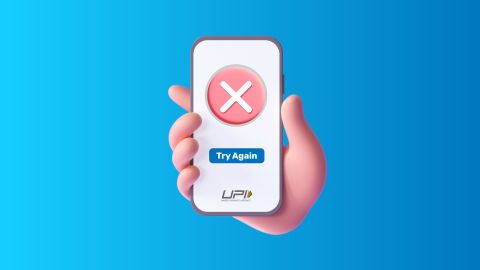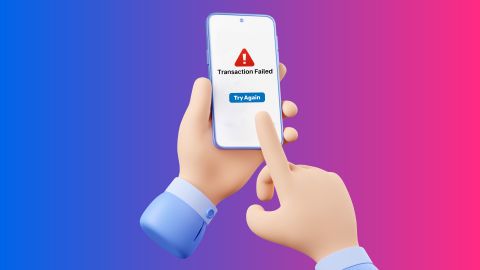Get a comprehensive overview of solar cells, from their construction to the working principle. Learn about their uses, advantages, and disadvantages in renewable energy.
Introduction to solar cell
-
A solar cell is also known as a photovoltaic (PV) cell. It converts light energy, typically from the sun, into electrical energy through the photovoltaic effect. Solar cells are the core components of solar panels, which generate clean, renewable energy. These cells are usually made from semiconducting materials like silicon. Solar cells are used in various applications, from small devices like calculators to large solar farms powering homes and industries. They offer an environmentally friendly alternative to traditional energy sources and play a key role in the future of sustainable energy. With platforms like Bajaj Pay on Bajaj Finserv, consumers can easily manage and pay for solar energy systems, helping to further support the shift towards sustainable energy solutions. Whether you're installing a new solar panel system or maintaining one, Bajaj Finserv makes it simple to manage your energy-related payments efficiently and securely.
Construction of solar cell
The construction of a solar cell involves several layers of semiconducting materials that enable the conversion of sunlight into electricity. At the core, solar cells are primarily made of silicon, a semiconductor material. The process begins with the creation of a thin, flat sheet of silicon that is treated and doped to form two layers: a positive layer (p-type) and a negative layer (n-type). These layers create an electric field at their junction, which is crucial for the generation of electrical current when exposed to sunlight.
On top of the silicon layers, metal contacts are placed to extract the generated current. A protective layer of glass is often added to shield the silicon from environmental elements, ensuring durability. Solar cells are typically encapsulated in a transparent, durable material, often a resin, to prevent damage from moisture or physical impacts.Working principle of solar cell
The working principle of a solar cell is based on the photovoltaic effect. Here, light energy is absorbed by the semiconducting material, causing the release of electrons. When sunlight strikes the surface of a solar cell, photons (light particles) hit the semiconductor material and transfer their energy to electrons in the silicon atoms. This energy causes electrons to be knocked loose from their atoms.
Due to the electric field at the p-n junction, the freed electrons are pushed towards the n-type layer, while the positive charge (holes) moves towards the p-type layer. This separation of charge creates an electric current. Metal contacts on the surface of the cell collect the electrons and allow the current to flow, which is then used to power electrical devices or stored in batteries for later use.V-I characteristics of a photovoltaic cell
The V-I (voltage-current) characteristics of a photovoltaic cell describe the relationship between the voltage and the current it produces under varying light conditions. The curve shows the maximum power point (MPP), where the product of voltage and current is the highest, providing the most efficient output for the solar cell. The open-circuit voltage (Voc) and the short-circuit current (Isc) are key parameters of the curve, showing the maximum voltage and current the cell can produce under ideal conditions. These characteristics are essential in determining the performance and efficiency of solar cells.Materials used in solar cells
Material Purpose Silicon (monocrystalline and polycrystalline) Primary semiconductor material for solar cells Copper Conducts electricity from the cell to external circuits Silver Used in the front contact grid for conducting electricity Aluminium Used for framing and support structures Glass Provides a transparent cover to protect the cell Resins/Encapsulants Protects the solar cell and helps prevent moisture ingress Criteria for materials to be used in solar cell
- Efficiency: Materials must have high electrical efficiency to convert sunlight into electricity.
- Cost-effectiveness: Materials should be affordable to make solar cells commercially viable.
- Durability: The material must withstand harsh weather and environmental conditions.
- Abundance: Materials should be abundant and not rare to avoid supply chain issues.
- Non-toxicity: Materials should be safe for the environment during production and disposal.
Advantages of solar cells
- Renewable energy source: Solar cells provide a sustainable energy solution that reduces dependency on fossil fuels.
- Low operating costs: Once installed, solar cells require minimal maintenance and have no fuel costs.
- Environmentally friendly: Solar power production emits no greenhouse gases, helping to combat climate change.
- Scalable: Solar cells can be deployed in various sizes, from small devices to large solar farms.
- Energy independence: Solar energy allows for off-grid power solutions, providing autonomy from utility companies.
Disadvantages of solar cells
- High initial cost: Solar cell systems can have high upfront installation costs, although this is decreasing over time.
- Intermittent energy source: Solar energy is dependent on sunlight, meaning it is unavailable during cloudy weather or at night.
- Energy storage challenges: Storing solar energy efficiently for later use requires expensive battery systems.
- Space requirement: Large installations of solar panels require significant space, which may not be feasible in densely populated areas.
- Production impact: Manufacturing solar cells requires energy and materials, which can have environmental impacts.
Uses of solar generation systems
- Residential power supply: Solar generation systems can power homes, reducing reliance on the grid.
- Commercial buildings: Many businesses are adopting solar power systems to cut energy costs and reduce their carbon footprint.
- Remote locations: Solar cells are used to provide power in off-grid areas where traditional electricity infrastructure is unavailable.
- Agriculture: Solar power is used to operate water pumps, irrigation systems, and greenhouses.
- Solar vehicles: Solar cells are being integrated into electric vehicles and boats to promote sustainable transportation.
Steps to pay your electricity bill online on the Bajaj Finserv website
Paying the electricity bill through the Bajaj Finserv website is simple. Here are the steps:
1. Visit the Bajaj Finserv website
2. Navigate to the ‘PAYMENTS’ section and click on ‘PAY NOW’ under the ‘ELECTRICITY BILL’ option
3. Select your service provider from the list of power suppliers
4. Enter your ‘CUSTOMER ID’ and click on ‘FETCH YOUR BILL’
5. Verify the bill amount and click on ‘PAY NOW’
6. Pay using the multiple payment methods available such as Bajaj Pay UPI, debit card, credit card, net banking, and Bajaj Pay Wallet.
Post the transaction you will be receiving a confirmation to intimate about successful payment.
Fee and charges
A convenience fee of up to 2% will be charged depending on the transaction amount and payment mode (inclusive of applicable taxes). For more information on fees and charges, click here.
Note: For failed transactions, the total amount including charges except taxes are reversed.State-wise electricity payment
Recharge and Pay Bills
Mobile Prepaid
Mobile Postpaid
Broadband Bill Payment
Electricity Bill Payment
Bajaj Finserv App for All Your Financial Needs and Goals
Trusted by 50 million+ customers in India, Bajaj Finserv App is a one-stop solution for all your financial needs and goals.
You can use the Bajaj Finserv App to:
You can use the Bajaj Finserv App to:
- Apply for loans online, such as Instant Personal Loan, Home Loan, Business Loan, Gold Loan, and more.
- Explore and apply for co-branded credit cards online.
- Invest in fixed deposits and mutual funds on the app.
- Choose from multiple insurance for your health, motor and even pocket insurance, from various insurance providers.
- Pay and manage your bills and recharges using the BBPS platform. Use Bajaj Pay and Bajaj Wallet for quick and simple money transfers and transactions.
- Apply for Insta EMI Card and get a pre-approved limit on the app. Explore over 1 million products on the app that can be purchased from a partner store on Easy EMIs.
- Shop from over 100+ brand partners that offer a diverse range of products and services.
- Use specialised tools like EMI calculators, SIP Calculators
- Check your credit score, download loan statements and even get quick customer support—all on the app.
Frequently asked questions
What are the main components of a solar cell?
The main components of a solar cell include the semiconductor material (usually silicon), electrodes, glass cover, and metal contacts. These parts work together to convert sunlight into electricity by utilising the photovoltaic effect.
How do solar cells convert sunlight into electricity?
Solar cells convert sunlight into electricity through the photovoltaic effect. When sunlight hits the solar cell, photons excite electrons in the semiconductor material, creating an electric current that is captured and used as electricity.
What are the materials used in solar cells?
The primary materials used in solar cells are silicon (monocrystalline, polycrystalline), cadmium telluride, and copper indium gallium selenide. Silicon is most commonly used due to its efficiency in converting sunlight into electricity.
Can solar cells work on cloudy days?
Yes, solar cells can still generate electricity on cloudy days, though their efficiency decreases since the sunlight is less direct.
Why is silicon used in solar cells?
Silicon is used because it is an efficient semiconductor, abundant, and cost-effective for manufacturing solar cells that can generate large amounts of electricity.
Show More
Show Less




